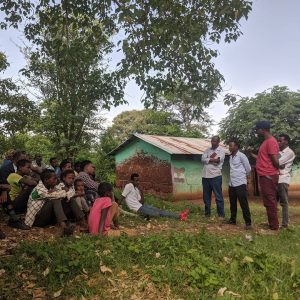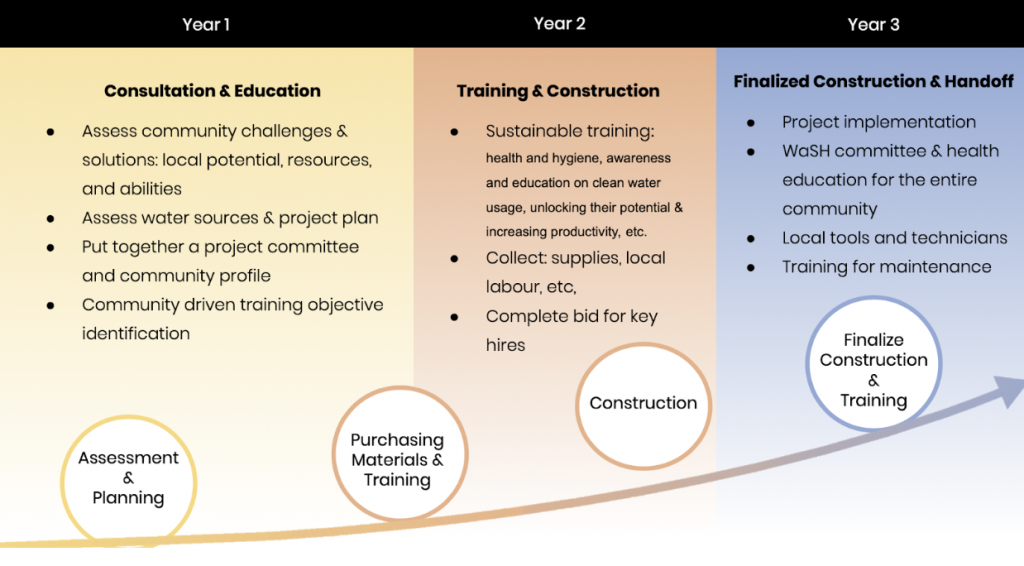Guest Blog: Melissa Quinn, Manager of Digital Partnerships, Run for Water
Water for Waraba Series, Part 2: Bringing Water to Waraba
 When 61 million Ethiopians lack access to safe water, how is a community identified as a partner community who will receive the support of Run for Water and all of its partners? It all starts with assessing each community’s needs in a depth which goes far beyond government surveys provided by the Ethiopian government.
When 61 million Ethiopians lack access to safe water, how is a community identified as a partner community who will receive the support of Run for Water and all of its partners? It all starts with assessing each community’s needs in a depth which goes far beyond government surveys provided by the Ethiopian government.
Ethiopian development workers on the ground will conduct surveys on each community to identify their needs and challenges according to the locals. From that survey, the most vulnerable communities are identified as the highest priority; Waraba was identified as an extremely vulnerable community in late 2018.
There is no access to clean water in Waraba and this has led to chronic water borne diseases which has had adverse effects on the health and productivity of the community as a whole. For all 3,186 individuals the only source of accessible water is a pond which is commonly contaminated by animals. When it comes to the rainy season, many unsafe substances can flood into the community from upstream communities which use the same source for all their needs including washing their clothes and bodies. This exposed water source has led individuals, just like Teriba Nani from our previous blog post, to face significant health risks. The contaminated water containing different microorganisms such as bacteria, amoeba, and cholera is dramatically hindering the ability of the community to attain good health for themselves and their families.
Once a community is identified, it receives a proposal to partner with Run for Water on a water project. Run for Water’s development work is centered on building a partnership with the local people first and foremost. This helps foster their sense of ownership of the project and in turn, improves the sustainability of the project. When communities accept the proposal, it means they are agreeing to raise at least 10% of the project cost and provide in-kind contributions like time and labor, for example, coming to community consultations, joining the Water, Sanitation and Hygiene Committee…etc
Then begins a three-year working relationship between the community and Run for Water and its partners. The key milestones over the 3 years are:

1) Assessment and planning
2) Purchasing materials and training
3) Construction
4) Finalize construction and Training
You will notice that the empowerment/training piece is woven throughout the three-year project as it is an extremely important element of the sustainable development model, and the key contributing factor to long term success within the community. To overcome the first milestone the training and education piece is essential in gathering local support, engagement, and inspiration. This also includes helping the community realize how innovatively and effectively they can use the many resources they have locally to change their lives for the better. For example, Waraba did not have a road going into the community, which creates challenges getting labour and materials into the community. It takes working with the community to help them realize they DO have the abilities and the resources to overcome this challenge and build a road which will forever benefit their communities’ economic abilities. We work with each community to overcome any and all unique challenges using different mobilization strategies such as:
- Organizing community gatherings to discuss the community’s specific challenges, priorities and opportunities.
- Facilitating trainings for various income generating activities
- Providing essential life skills training and long-term financial planning
- Establishing a water management committee from the locals to monitor and maintain the engagement of the entire community, manage challenges, and mobilize resources.
This important collaborative and engaging element is, in our opinion, a critical element of sustainable inspiration and empowerment. Having the persevering, conscientious, and enthusiastic involvement of the community to fulfill all four milestones creates a beautiful model of shared success. Most importantly, the ownership established by the community for their own well-being is what has led Run for Water to have a 100% success rate of communities’ maintaining their water and educational systems built in the last 12 years.
The upcoming blog posts will go through each Milestone in depth and share the unique details of the challenges and solutions within Waraba. As we complete the milestones, we will be writing an update to our contributors via GiveTrack. Please follow along this exciting journey and help us along the way as we bring help a community find empowerment, water, and wellness!
GiveTrack is a donation platform we’ve been utilizing to expand our fundraising efforts globally. The platform allows for frequent, transparent communication throughout the entire journey of a fundraising campaign and project. Even better, is that GiveTrack allows for donations in fiat currency, and crypto currency!
Contact: Melissa Quinn at [email protected]